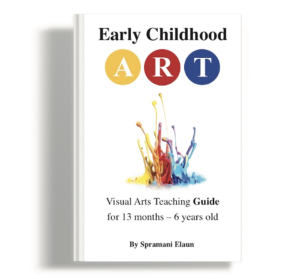
African Mask History & Mask Craft Project
By Spramani Elaun
I had such a wonderful time teaching the history of African Mask recently at The Center For The Arts Museum in preparation for their exhibition: The History of Hair Story, 4000 Years Without a Comb. I thought I would share some tips for teaching these lessons to your students, and how to follow up with their own mask craft.
My purpose in creating this post is to share how-to teach children texture, symmetry, composition and how different elements crafted together can create design by observing other artifacts closely.
I hope children have opportunities to make connections to how these African mask where used to celebrate ceremonies, and help them make connections to their own cultures and how they celebrate special ceremonies.
I do want to confront any misconceptions this is cultural appropriation. This is not a lesson to copy and make your own African mask, but for children to be inspired to create their own orginal design of a mask for any purpose.
In fact, I would like teachers to use this as a springboard to introduce the term “cultural appropriation” and give examples of some wisdom, respect, impact on other cultures’ emotions, and empathetic awareness on the general topic of cultural appropriation.
Masks have been around in art history for centuries and used for many reasons. Masks can conceal part of a face, a full face, even make-up can be designed as a mask.
Presently and in the past African masks are used to mark special occasions like religious ceremonies, rituals, funerals, births, and harvest celebrations.

Making a mask can help children understand different cultural ideas. This craft project also gives kids the opportunity to journey through history by creating their own mask for their own purpose, or admire the artistry of masks.
An African mask history lesson can inspire kids to craft with their own hands. You can also teach very important art literacy by doing this type of craft.
You can ask children important questions like; how do artists use found objects to express their identity, or celebrate their beliefs.
You can teach important art concepts like line, shape, symbols, symmetry, assemblage, design and texture.
Creating a unique mask can be very low in cost to craft by just using recycled materials. They can be made with paper, cardboard and even clay.

African Mask – Art Literacy Concepts:
- Historical cultural ideas
- Planning, composition, and design arrangements (The elements of design
- Symmetry and balance
- Fine motor development by hand constructing

Where To Start:
Tips for Craft Project
There’s so many different ways kids can make a mask, so don’t be worried if you can’t find these same exact supplies.
Begin by teaching students about the balance and symmetry of different types of face mask.
Allow children to brainstorm their own imaginative mask.
Have them create their own idea for a mask, it can be connected to their own heritage, theatrical mask, masquerade mask, or any ideas about a mask design.
Mask can even be a made up creature, their favorite animal or character.
You should inspire children by the mask of antiquity, but not copy or create African masks unless it is their own heritage to celebrate.
Encourage your student to create their own original idea or theme, but design with symmetry and balance.
Gather what you can, and let the kids get creative on how they will use the materials.
Be sure to discuss and give different art examples from antiquity.
Resist using simple 2D designs with just markers and crayons. Give kids the opportunity to construct with different materials. Try to create a 3D depth texture using different items. Here are some fun ideas to help create 3D depth:
Feathers
String
Pipe cleaners
Raffia
Hemp string
Natural fiber String
Yarn
Fabric scraps
Beans – for texture
Pasta – for texture
Seeds- for texture
Beads – for texture
Popsicle sticks

Mask – Materials & Supplies
Here’s the basic materials that you can gather to start making these mask.
Low Temperature Glue Gun
Large Construction Paper – a variety of colors
Basic White Glue or glue sticks
Scissors
One Step Further: Download My African Mask Demonstration Tool


All rights reserved © 2024, Nature of Art®

No part of this blog may be used or be reproduced in any manner whatsoever including reproducing, publishing, performing, and making any adaptions of the work – including translation into another foreign language without written permission except in the case of brief quotations embodied in critical articles and reviews. Nature of Art® Publishing P.O. Box 443 Solana Beach, California 92075.


